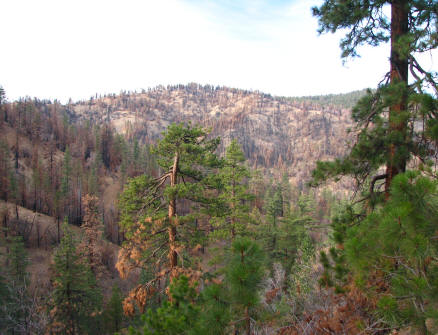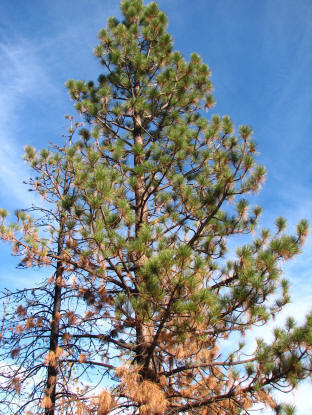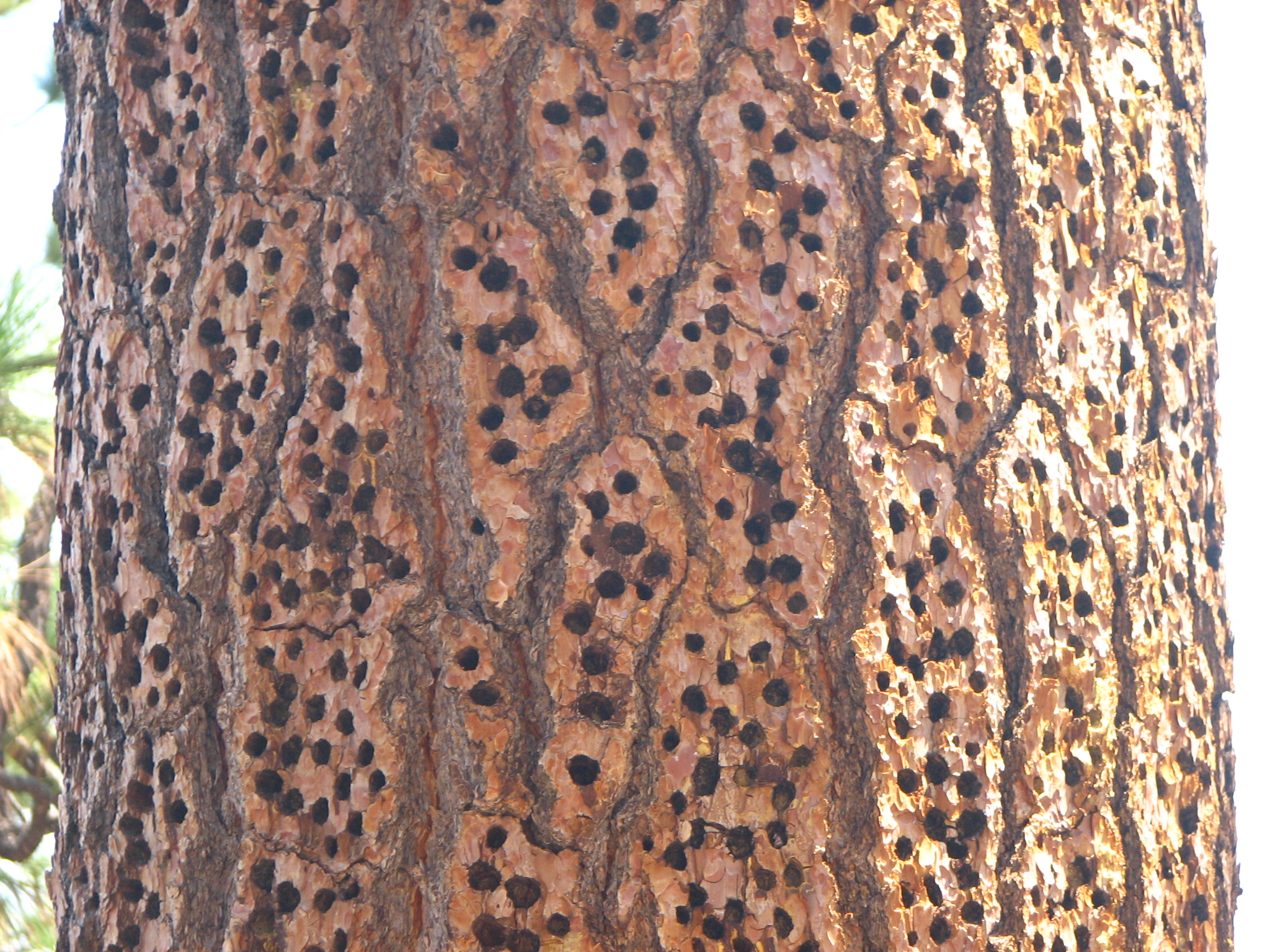|
July 17, 2008
COURT HALTS COMMERCIAL LOGGING
IN FRAGILE BURN AREA
ForestWatch Lawsuit Protects Alamo
Mountain
and Grade Valley in Ventura's Backcountry
A federal court ruled earlier this month that the
Forest Service “ignored or entirely dismissed” its own
regulations in authorizing a commercial logging operation in a
remote section of the Los Padres National Forest. The ruling
halts the 1,000-acre project until officials prepare an
Environmental Assessment to reduce the environmental impacts of
commercial logging in this fragile burn area in northern Ventura
County.

The south side of
Alamo Mountain, hit hard by the fire, shows new signs of life
as the process of post-fire recovery begins.
The court’s ruling responded to a lawsuit filed
by ForestWatch in February challenging the Forest Service’s
approval of the so-called Day Fire Hazard Tree Removal Project.
We filed the lawsuit after officials refused to prepare an
Environmental Assessment for the project to evaluate the impacts
of heavy machinery on the post-fire landscape. The areas slated
for logging had partially burned in the 2006 Day Fire and were
just beginning to recover.
“This ruling is a tremendous victory for our
local forests, wildlife, and watersheds,” said Jeff Kuyper,
ForestWatch executive director. “The court confirmed what we’ve
been saying all along—that an intensive commercial logging
operation would wreak havoc on this ecosystem just as it begins
to recover from the effects of wildfire.”
After the 2006 Day Fire passed through
Grade Valley
and
Alamo Mountain
on the Mt. Pinos District of the Los Padres
National Forest, officials became concerned that “dead or dying”
trees might fall onto the road, and proposed the Day Fire Hazard
Tree Removal Project.

This tree is marked for
removal, despite the presence
of many green needles and no decay
or root damage.
But instead of simply cutting the trees and
leaving them in place for soil nutrients and wildlife habitat,
logging companies pressured the Forest Service to allow a
commercial timber sale in the area. And to fast-track the
project through the approval process, the Forest Service
classified the logging as “routine road maintenance,” which
removed it from the requirement to prepare an Environmental
Assessment (EA).
The court’s ruling centered on whether this “road
maintenance” classification was consistent with agency policy.
In a stinging rebuke of the Forest Service’s approach, the court
found that the Forest Service “ignored or entirely dismissed”
its own requirement to prepare an EA for any salvage logging
projects larger than 250 acres, and had miscategorized the
project as “routine road maintenance” in an effort to avoid
preparing this important environmental document. This project
was more than four times larger than the allowable limit,
clearly requiring an EA.
The court agreed, concluding, “Due to the acreage
of trees involved, the Forest Service plainly erred in making
use of the Road Maintenance and Site Maintenance CEs and its
decision to do so was arbitrary and capricious.”

Trees affected by fire still
provide valuable habitat for wildlife.
During the approval process for this project,
ForestWatch presented the Forest Service with several scientific
studies showing that salvage logging can seriously hinder the
recovery of burned areas following wildfire. Logging requires
the use of heavy equipment on fragile soils, and can cause
long-term damage through the construction of landing areas, road
widening, and dragging trees to loading areas, according to
those peer-reviewed studies.
The project was fraught with problems from the
beginning. In addition to the agency’s failure to prepare an EA,
ForestWatch also discovered—through several visits to the
project area — that as many as 20% of the trees marked for
logging were still living and did not even meet the agency’s
criteria for removal as a hazard tree.
The court’s ruling will hopefully prompt a more
sensible approach to hazard tree management, one that treads
lightly on the land and fully allows the recovery of the
post-fire landscape.
|

